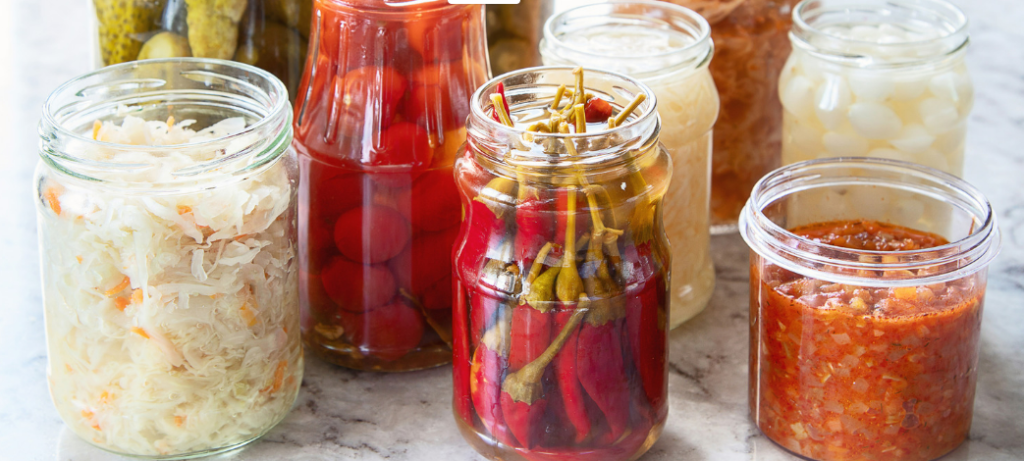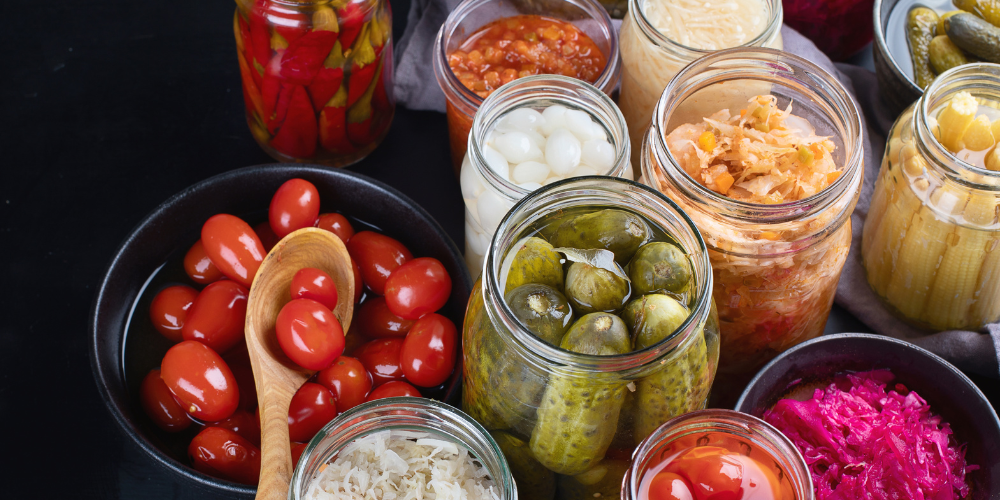Welcome to the fascinating world of fermentation, an age-old culinary technique that has been breathing life into our food for thousands of years. While the word “fermentation” might initially bring to mind a loaf of sourdough bread or a bottle of craft beer, this method of food preservation extends far beyond these well-known examples. With a resurgence in popularity in recent years, it’s worth diving into what makes this process truly magical and how it can transform your culinary journey.
Fermentation, at its core, is a metabolic process that converts sugar into acids, gases, or alcohol. It’s responsible for some of our most beloved foods and drinks, including cheese, yogurt, wine, chocolate, coffee, pickles, sauerkraut, and kimchi, to name a few. But what makes fermentation so special, and why has it been an integral part of human diets across cultures and centuries?

The Health Benefits of Fermentation
Fermentation isn’t just a way to preserve food and enhance flavor; it’s also a powerful tool for nutrition. The process of fermentation can make food more digestible and increase the availability of certain nutrients. Fermented foods are rich in probiotics, beneficial bacteria that promote gut health and boost our immune system. The consumption of fermented foods has been linked to a range of health benefits, from improved digestion to better mental health.
Flavor Transformation through Fermentation
Fermentation is a culinary alchemist, transforming simple ingredients into something complex and flavorful. The sour tang of sauerkraut, the umami depth of soy sauce, the distinctive funk of blue cheese — these flavors are all products of fermentation. Through this process, ordinary ingredients can be elevated into something extraordinary, adding a new layer of depth and complexity to your dishes.

Fermentation: A Sustainable Practice
In an age where sustainability is increasingly important, fermentation stands out as a remarkably green practice. It’s a natural method of preservation that extends the shelf life of food without the need for artificial preservatives or refrigeration. Plus, it’s a fantastic way to minimize food waste. Have a glut of cucumbers from your garden? Turn them into pickles. Got leftover cabbage? Make sauerkraut. With fermentation, the possibilities are endless.
Getting Started with Fermentation at Home
Despite its ancient roots and somewhat mystical reputation, fermentation is surprisingly accessible for home cooks. All you need to get started are some fresh ingredients, a bit of salt, and time. Here are a few tips for beginners:
Start Small: Begin with something simple, like sauerkraut or yogurt. Once you’re comfortable with the process, you can move on to more complex projects like sourdough bread or kombucha.
Keep It Clean: When fermenting, cleanliness is crucial. Make sure your jars, utensils, and hands are clean to avoid unwanted bacteria.
Be Patient: Fermentation is a slow process. It can take anywhere from a few days to several months, depending on what you’re fermenting. But the wait is worth it!
Dive Deeper: There are many resources available for those interested in fermentation, from books to online forums. Don’t be afraid to seek out more information and learn from others’ experiences.

In conclusion, the art of fermentation is a gateway to a world of culinary possibilities. It’s a journey of flavor, health, and sustainability that brings us closer to our food and the natural world around us. So why not give it a try? You might just discover your new favorite dish, and you’ll undoubtedly gain a newfound appreciation for the magic of fermentation.



